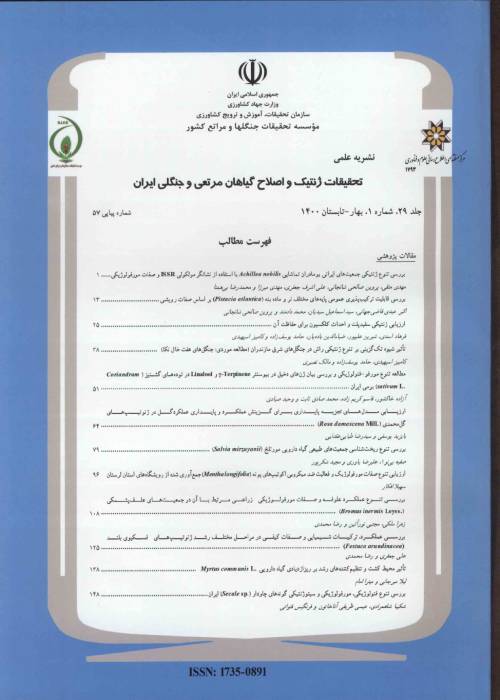Haplotypic variation in forked and monopodial beech (Fagus orientalis Lipsky) tree groups using chloroplast simple sequence repeat (cpSSR) markers
Author(s):
Abstract:
For the past 30 years or so, Iranian foresters have attempted to improve management of broad-leaved stands of Hyrcanian forests, of which beeches are among the most important species. Silviculture of beech requires skill, and the slightest error can cause reduced quality, often as a result of the formation of forks on the stem. This phenomenon can be related to species suggesting that there may be genetic determination in some species; and linked to external elements, which is improvable by appropriate management. Aim of this work is the investigation of a possible relation between the variability of the trunk morphology and the genetic variation. Based on two polymorphic chloroplast microsatellites that had been previously identified and sequence characterized, genetic variation was studied in a total of 176 individuals from the forked and monopodial beech (Fagus orientalis Lipsky) tree groups in 13 oriental beech (Fagus orientalis Lipsky) populations distributed all over the natural range in Hyrcanian forests. We found six and two different length variants at each locus, respectively, which combined into ten different haplotypes. Genetic distances between most of the populations were high and significant, whereas not between the forked and monopodial beech tree groups in each population. There is also evidence for spatial organization of the distribution of haplotypes, as shown by permutation tests, which demonstrate that genetic distances increase with spatial distances. Besides, the correlation between morphology and geographical distance matrices was significance (R2=0.116, P=0.01), indicating existence of a relatively clinal trends in variation of microsatellite loci. A large heterogeneity in levels of diversity across populations was observed, but not between the forked and monopodial beech tree groups in each population. Furthermore, there is good congruence in the levels of allelic richness of the two loci across populations. The present organization of levels of allelic richness across the range of the species did not show any significant differentiation between the forked and monopodial beech tree groups.
Keywords:
Language:
Persian
Published:
Iranian Journal of Rangelands Forests Plant Breeding and Genetic Research, Volume:21 Issue: 2, 2013
Page:
257
magiran.com/p1243339
دانلود و مطالعه متن این مقاله با یکی از روشهای زیر امکان پذیر است:
اشتراک شخصی
با عضویت و پرداخت آنلاین حق اشتراک یکساله به مبلغ 1,390,000ريال میتوانید 70 عنوان مطلب دانلود کنید!
اشتراک سازمانی
به کتابخانه دانشگاه یا محل کار خود پیشنهاد کنید تا اشتراک سازمانی این پایگاه را برای دسترسی نامحدود همه کاربران به متن مطالب تهیه نمایند!
توجه!
- حق عضویت دریافتی صرف حمایت از نشریات عضو و نگهداری، تکمیل و توسعه مگیران میشود.
- پرداخت حق اشتراک و دانلود مقالات اجازه بازنشر آن در سایر رسانههای چاپی و دیجیتال را به کاربر نمیدهد.
In order to view content subscription is required
Personal subscription
Subscribe magiran.com for 70 € euros via PayPal and download 70 articles during a year.
Organization subscription
Please contact us to subscribe your university or library for unlimited access!


